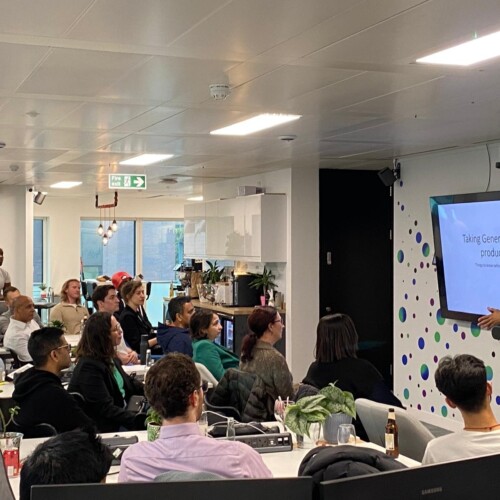Cloud & Platforms
A transparent, repeatable model from forensic analysis, to the development of a prescriptive approach to delivery with a clear focus on capability building and handover.
Stary your journey today
Serverless computing is a concept within cloud computing where the provider is entirely responsible for allocating and managing the required compute, networking and storage resources to execute small, short-lived tasks, also known as functions. It is often used within a “microservices-architected” application, where a trigger or event drives small isolated services, each with a single purpose. The primary benefit of this is cost optimisation since providers charge only for the duration of that task execution, removing the wasted cost of running an idle server. In addition, developers can write and deploy their code without extensive knowledge of server infrastructure, operating systems, patching, scaling and availability since this is all handled by the cloud provider.
In 2014, Amazon introduced AWS Lambda, which is widely acknowledged as the first modern serverless technology within public cloud computing. It was followed up by Microsoft’s Azure Functions and Google Cloud Functions in 2016 and 2017, respectively. The concept was simple – a compute service that executes code in response to an event, automatically deploying the required infrastructure and terminating this once complete. The customer is charged only for the number of served requests and the duration of the execution (initially in increments of 100 milliseconds, but this is now reduced to a price per millisecond), making it an extremely cost-effective process.
The above diagram shows a theoretical example of a serverless application hosting a static website with dynamic information.
Find out more on how we can help you build your product, platform, or service
This architecture demonstrates the combination of five serverless services, in this case within AWS:
Migration from a standard monolithic application to a serverless architecture would involve the following:
This process of splitting the application into smaller tasks is called microservices architecture.
In the past, the above would run on a server, or multiple servers depending on the number of requests received by the website. These servers would cost the same amount of money even without any activity. If there were the potential for a very high number of requests at times and very little activity at others, there would need to be sufficient servers running to cope with the increased demand, even when there were none.
In contrast, serverless computing charges are only applied by the cloud provider when there is some activity. Costs for the API Gateway, Lambda functions and DynamoDB database are accrued when these services are active. The one exception is the static data for the website stored in the S3 bucket. The cost of this is minimal compared to the running costs of a server. Server computing, therefore, means higher charges when there is high demand but little to no charges at quiet times, dramatically reducing the cost of the solution.
In addition, the developer who creates this application needs only to know the code to write and retrieve data from the database via the API. They do not need to be able to deploy a server, configure the operating system and install the applications which would fulfil these functions. There is also no ongoing management of the server infrastructure – no patching, availability and security monitoring of the operating system, disaster recovery planning etc.
Finally, serverless components will also scale automatically on demand. A well-designed and implemented serverless solution should scale with requests as they arrive, meaning your customers never receive an error due to an unexpected outage caused by popular demand – this can be crucial to a successful launch of a new product or service.
As is always the case, there are some drawbacks to using serverless functions:
In summary, serverless computing should be a vital part of your cloud portfolio. Whilst there are some drawbacks, the cost benefits of migrating key services to serverless services greatly outweigh them for most scenarios and will allow your business to remain competitive in today’s challenging economic conditions. Serverless computing also fits into the cloud-native development and DevOps philosophies that enable faster, more reliable deployments and drive digital innovation.
A transparent, repeatable model from forensic analysis, to the development of a prescriptive approach to delivery with a clear focus on capability building and handover.
Innovate with confidence by taking control of your data and technology.
Propel your organization's competitive ability to anticipate change, accelerate digital business and drive innovation in times of disruption.

esynergy proudly hosted another London AI meetup on April 25th, drawing over 60 AI practitioners from across the city. Attendees ... Learn more

Is it really necessary to measure the productivity of developers? “Developer productivity” is an emotive, and occasionally misunderstood term. It ... Learn more

FIMA Connect has always been a cornerstone event for finance professionals looking to integrate cutting-edge technology and strategies. During this ... Learn more